A Surgery Guide For Pet Owners
Your decision to have an elective surgical procedure performed on your pet is a big one! Over the years, as veterinary medicine has changed and progressed, surgical procedures and standards of care have changed as well. After years of talking with our clients, we realize that there is a large misperception about exactly how much the standards of care differ from hospital to hospital - especially when it comes to spays, neuters, and dental cleanings. Since care varies, price will vary. Low-cost spay and neuter clinic definitely have a place in our community to help with the pet overpopulation problem. Unfortunately, in order to provide their services at such low prices, the quality and safety suffers. Many people will shop around for the lowest price on surgery without knowing what saving a few dollars will cost them or their pet.
In order to help you make the most informed decision about your pet's surgical options, we have provided this information for you. Please feel free to contact us at any time with questions that you may have.
|
1. First and foremost
Thank you for even considering to have your dog or cat spayed or neutered! The vast majority of dogs and cats should be spayed or neutered before they are 6 or 7 months old. (WARNING: I'm about to start on my soapbox!) Only responsible breeders, that is, those who actively show their pets and who are dedicated to improving the quality of a particular breed, or those who participate in breeding programs for guide dog/companion dogs, should consider breeding. Spaying and neutering your pet will not only reduce the likelihood of behavior problems and accidents, but will also give your pet the best chance of living a long and healthy life. Unfortunately, we hear so many times that a new pet owner wants to breed the new pet because it "Has Papers". If only folks realized that "Having Papers" is meaningless when it comes to quality. Being registered with the AKC or other groups, unfortunately, does not mean that your pet is of good quality - it means only that its parents were registered. And any one can breed dogs and cats. There are no license requirements in Tennessee. We see far too many people breeding dogs and cats without regard to the pet's temperament, confirmation, or qualities.
|
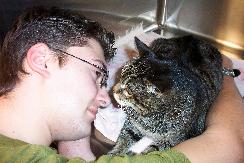
|
|
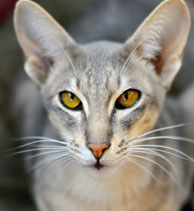
|
2. Presurgical Evaluation
A presurgical consult and examination is critical for so many reasons. A thorough history is necessary to determine a pet's overall health status and to determine what the pet's recovery environment at home will be like. The pet should be evaluated for disease risk, vaccination status, medical health history, drug interactions, and have heartworm, flea, and intestinal parasite screenings performed. Likewise, a thorough physical examination is very necessary to diagnose infectious diseases, heart conditions, or debilitation from parasites. At Boyds Creek Animal Hospital, your pet will have a thorough physical exam both prior to the day of surgery, and also again the morning of surgery. In addition to the exam and parasite screenings, we also recommend a preanesthetic blood test to detect hidden problems, such as with blood sugar, kidneys, or liver, that could cause serious complications with anesthesia or surgery.
|
|
3. Low Volume, High Quality
Your pet is an individual here. We schedule only 5 or fewer surgeries or advanced procedures on each surgical morning in order to ensure that your pet is receiving the highest quality and most individualized care possible. Being thorough takes time! It it impossible to be thorough when performing surgeries on 25-35 patients each day, as in many of the low-cost spay-neuter clinics. Do you want your special pet to be just another number? High volume, low quality operations are stressful on all involved - and there is never enough staff to properly examine and monitor animals from start to finish. I know it sounds harsh, but I have worked at low-cost spay-neuter clinics. Low cost spay/neuter operations rely on volume to stay open. Visit them, and see for yourself. While there, feel free to ask to see the paperwork and forms that will be used to monitor your pet's progress, both before surgery, during surgical induction and the actual procedure, and while in recovery. Compare how detailed their forms are to our forms to see what is being monitored and what is not. You will see that anesthesia is not being monitored and drug doses and effects are not being noted. Also, please ask about the credentials of veterinary technicians and support staff that will be helping with your pet's procedure. At our hospital, we are so very proud of our staff's capabilities and training. You deserve to know the details of your pets surgery, every step of the way.
|
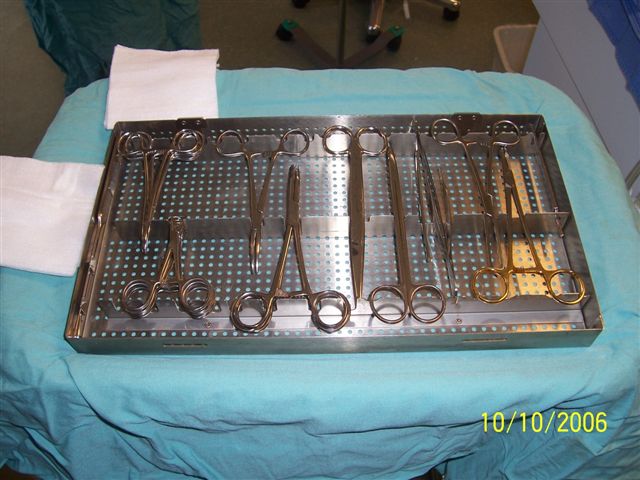
|
|
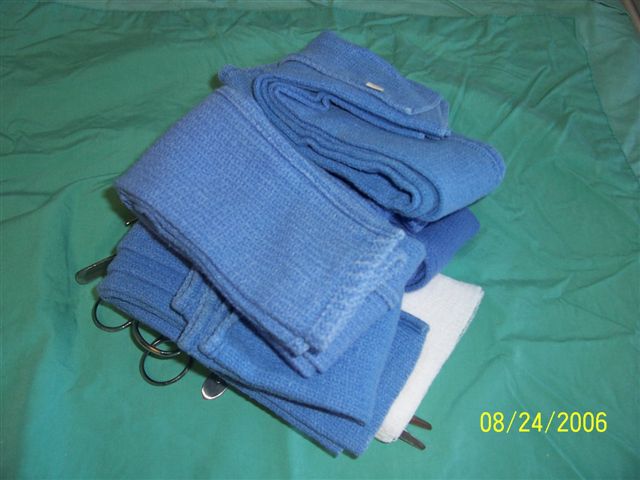
|
4. Anesthesia ASAP (As Safe As Possible)
While most surgical procedures are uneventful, taking added precautions can decrease the risk of anesthetic complication. The first precaution, as mentioned previously, is the presurgical exam and parasite/bloodwork screening. Second, at our hospital, we administer preanesthetic medications to help reduce your pet's anxiety and help stabilize your pet's blood pressure and heart rate during surgery. We also give preoperative pain medication. The pre-medications administered will vary based on your pet's breed, age, weight, health, and underlying medical conditions. Did you know that not all veterinary hospitals give pre-medications prior to surgery?
Next, and prior to inducing anesthesia, an IV catheter will be placed in your pet's leg. The IV catheter is our port to administer IV fluids and for providing emergency drugs should an emergency situation arise. IV fluids may be administered to your pet to help maintain blood pressure, increase perfusion to internal organs, prevent dehydration, and hasten recovery.
|
All anesthetized patients are intubated. Intubated means that a tube is inserted into the animal's airway to allow for supplemental oxygen and gas anesthesia as needed. This tube keeps the airway open and is essential to prevent aspiration into the lungs if your pet vomits or has excess fluids in its mouth, such as during dental cleanings. No dental procedures should ever be performed on an animal if it is not intubated. Aspiration of fluids into the lungs can cause a serious and life-threatening pneumonia.
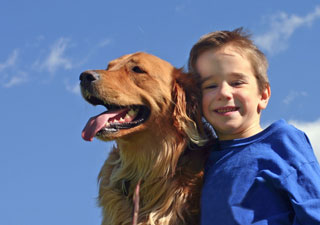
Your pet will be monitored by the veterinary surgeon and a licensed veterinary technician during his or her anesthesia. Your pet will be monitored by a respiratory monitor, a heart monitor (ECG), a blood oxygen monitor, a blood pressure monitor, and temperature will be checked regularly. Warmth is provided during and after anesthesia. In addition, your pet's gum color, pulse, and respiration quality will be monitored.
|
5. Pain Management
Surgery hurts! We all know that. Animals feel pain just like we do - but they hide it. Your pet's pain will be managed both before, during, and after surgery. You would likely be surprised at how many hospitals still do not routinely provide pain medication for surgery patients.
|
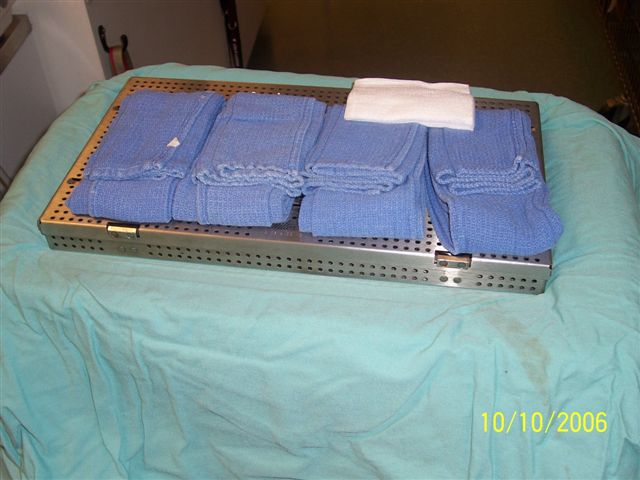
|
|
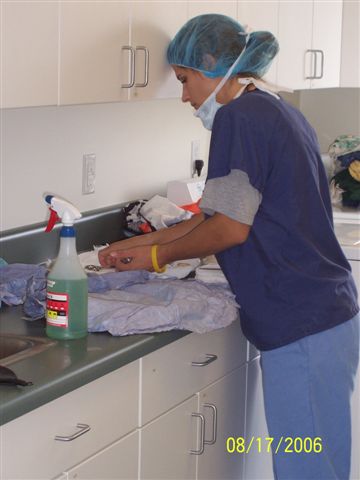
Assisting with Surgical Procedures
|
6. Facility Quality
A quality veterinary facility will have a separate surgery preparation area from the surgery room. If the surgery area is not a single use area, infection rates are increased by increased traffic within the room. Performing surgeries or procedures in the surgery room that are not "sterile" procedures increases infection rates. Having sinks, cages, poorly maintained flooring, ceilings, and/or walls in the surgery room, as well as having carpeting, increases infection rates - these areas all harbor debris, bacteria, molds, and viruses.
7. Written Post-Surgical Care Instructions
Aftercare of surgical patients is very important for proper healing. The hospital should provide discharge instructions for your pet.
|
8. Other Ways Surgical Care and Quality May Be Reduced
Some of the ways in which corners are cut: (WARNING - This is not for the faint of heart!)
- Not performing a thorough presurgical examination
- Assembly Line Style Surgery: moving from one pet to another
- Not scrubbing prior to surgery
- Not wearing a new and sterile gown for each procedure
- Not wearing new and sterile gloves for each procedure
- Not covering hair and jewelry with a cap, or wearing a mask
- Using the same surgical instruments on multiple animals without sterilizing them
- Not giving presurgical medications
- Not using pain medicines
- Not intubating anesthetized patients
- Using injectable drugs to maintain anesthesia rather than using gas anesthesia
- Using lower-quality suture material
- Not using a new, individual suture pack for each animal
- Using lower quality drugs and instruments
- Not monitoring the animals properly
- Using poorly trained or untrained assistants
9. A word about Surgical Instruments, Gloves, and Suture
Surgical instruments can vary greatly in quality. Using less-than-high quality instruments can cause increased tissue trauma, which leads to increased pain and longer healing time. The surgical pack of instruments should be used on only one pet, then be cleaned, inspected, lubricated, repackaged, and sterilized. Using instruments on more than one animal between cleanings and autoclave sterilization can lead to an increased chance of infection and spreading disease.
Surgical gloves are made to be disposed of after every surgery. In some hospitals, gloves are reused. Of course, some places do not use gloves at all, or use nonsterile "exam" gloves for surgery.
|
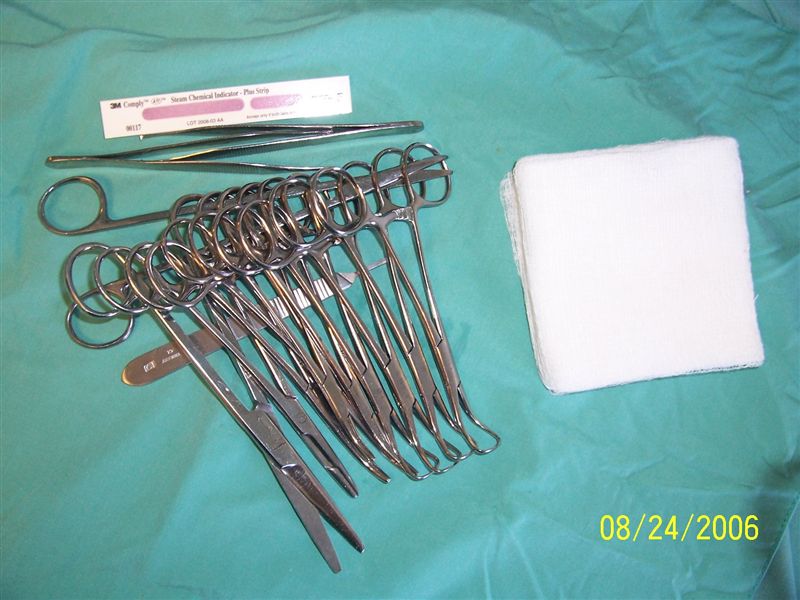
|
An often overlooked aspect of surgery is the choice of suture material. There is a great difference in suture materials that are available today. Sutures vary greatly in type, strength, stiffness, and cost. Some suture materials are not very strong, and cause increased inflammation within the tissues, or the knots can even untie. These material are very inexpensive. Better products cause less reaction, with less pain and tissue trauma and inflammation, allowing greater security and faster healing. Some places will even reuse suture, placing the material into a solution until it can be used again. Another cost cutting method is to use suture off of a reel, rather than using individually packaged suture. Suture is simply rolled off a reel and threaded through a needle which is used over and over, and dulls quickly. These needles also leave much bigger holes, as they have to be large enough to thread.
|
|







